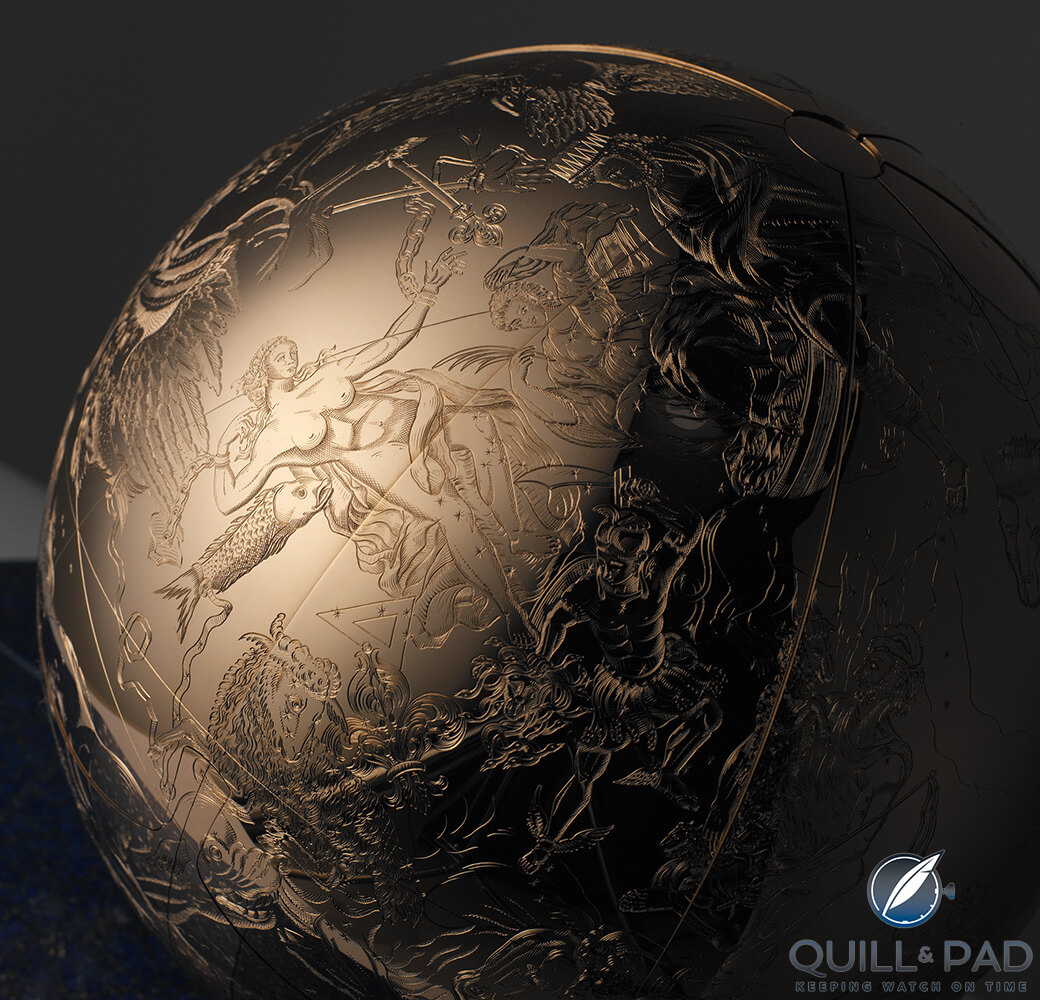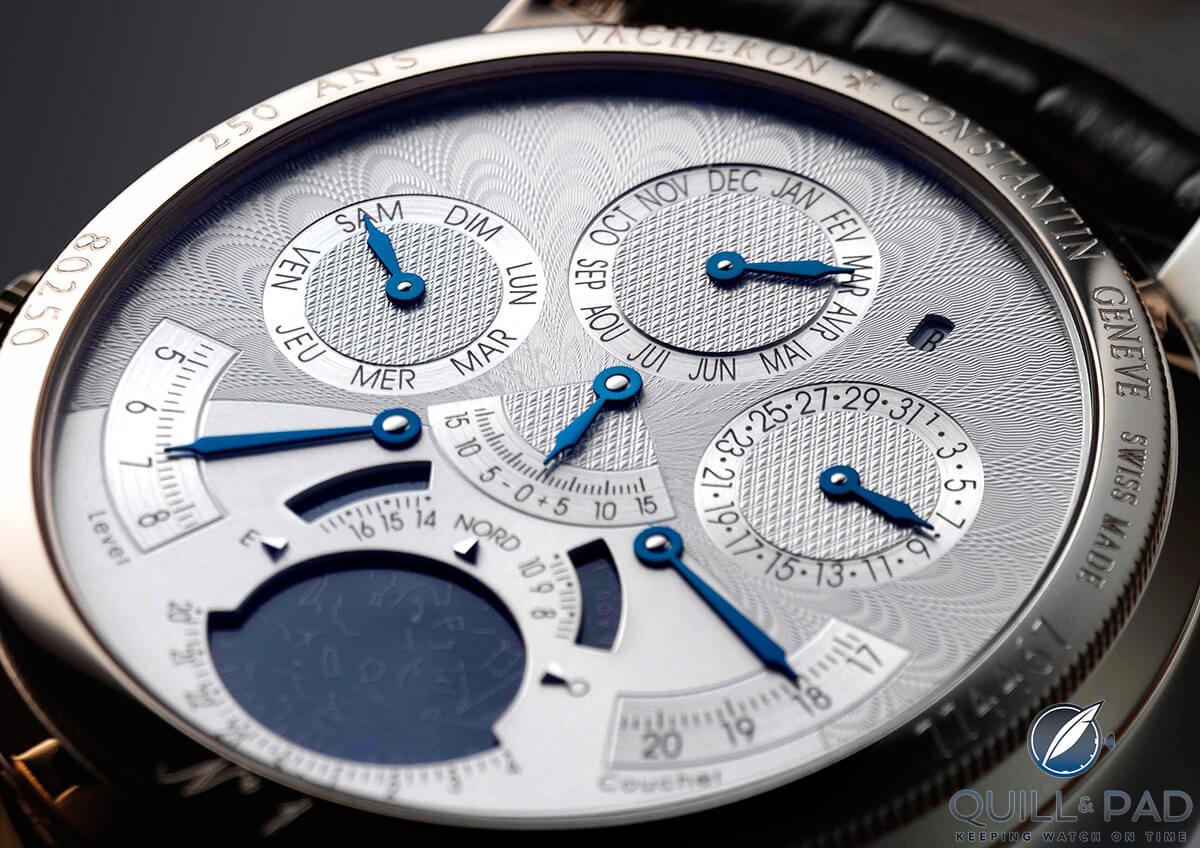As we approach Vacheron Constantin’s 260th anniversary, which is set to be celebrated on September 17, 2015, I would like to take a brief look at the epochal timepieces that Vacheron Constantin brought out in 2005 in honor of its first quarter century.
To celebrate a milestone like 250 years is big for any manufacture. But for Vacheron Constantin, it was doubly so: the Genevan giant is one of the very few – and certainly the oldest – Swiss watch company to have manufactured its timepieces consistently without interruption over the entire course of its long lifespan.
September 17, 1755 has been pinpointed as the date of Vacheron Constantin’s founding because documentation exists that 24-year-old master watchmaker Jean-Marc Vacheron signed his first apprentice that day: he met Esaïe Jean François Hetier and his father at the office of Master Choisy, a well-known notary, on that particular Wednesday to sign the formal contract.
1755 – 2005: grand Genevan tradition
The year 2005 was a big one for Vacheron Constantin. The world of mechanical watches was looking rather rosy – in fact, I would say it was positively booming – and the brand enjoyed a healthy reputation as one of the so-called big three. And it had just moved into its architecturally acclaimed, purpose-built premises in Geneva’s “watch suburb” Plan-les-Ouates.
At SIHH 2005, Vacheron Constantin launched five models – four wristwatches and one clock – all of which alluded to its long heritage in the great Geneva tradition. Four of the timepieces symbolically represented the date 1755 in the number of limited edition pieces produced: 1, 7, 55, and 1755.
Representing the top of the pyramid among these was a one-off clock whose name summed up the history of the company as viewed right from its beginning in 1755: L’Esprit des Cabinotiers. “Cabinotiers” being the craftsmen in eighteenth-century Geneva, and “esprit” being the French word for “spirit.”
The poetically inclined Esprit des Cabinotiers is a “secret” clock in the form of a pink gold globe engraved by hand according to the sky chart drawn by Robert de Vaugondy (1723-1786), geographer to Louis XV.
It rests upon a base of lapis lazuli, onyx, and pink gold. The sphere’s eight petals open up automaton-style when a mechanism is activated; the whereabouts of the mechanism is known only to the owner.

Beautiful lever controls for the opening and closing of the globe of the Vacheron Constantin Esprit des Cabinotiers
Naturally, the manually wound movement containing twin spring barrels in the clock incorporates a spectacular range of complications and astronomic indications: hours, minutes, deadbeat seconds, 24-hour display/second time zone, power reserve, a perpetual calendar including the day, date, month, year, leap year, equation of time, age and phases of the moon, temperature, quarter repeater with silent mode, and an astronomical calendar providing the position of the sun according to the Gregorian calendar. This latter mechanism was built on the basis of calculations by mathematician Charles Etienne Louis Camus (1699-1768) and watchmaker Antide Janvier (1751-1835).
Four wristwatches
Each of the four wristwatches presented at this time contained a set of distinctive features specific to the 250th anniversary: exclusive, finely fluted cases with specially designed, soldered lugs; original and genuine guilloché on the dial; and hands based on one of the company’s designs from 1926.
Each watch boasted its own new caliber, entirely designed, developed, and produced by Vacheron Constantin. All of them were stamped with the Seal of Geneva.
The Tour de l’Ile required more than 10,000 hours of research and development by designers, engineers, production staff, and watchmakers. It was the most complicated small-series wristwatch ever made at the time and boasted an astonishing sixteen complications and astronomical indications displayed on two faces (front and back).
Seven pieces of the Tour de l’Ile in a pink gold case were produced; one extra example was retained for the company’s heritage collection.
The front contains an impressive array of complications, beginning with the graceful 60-second tourbillon at 6 o’clock. Others on the busy dial include the hours, minutes, power reserve, moon phase with hand-engraved gold moon, and strike mechanism torque (meaning the state of winding of the minute repeater).
On the back, the following complications and displays can be found: perpetual calendar with weekday, month and date, display of leap year, equation of time, a sky chart, and the times of sunrise and sunset times calculated for Geneva.
Quick Facts Tour de l’Ile
Case: 47 x 17.8 mm, pink gold
Movement: manually wound Caliber 2750 with one-minute tourbillon and 58 hours power reserve; Seal of Geneva
Functions: hours, minutes, seconds; power reserve display, moon phase with hand-engraved gold moon, strike mechanism torque (meaning the state of winding of the minute repeater), minute repeater, perpetual calendar with weekday, month and date, display of leap year, equation of time, a sky chart, and the times of sunrise and sunset times calculated for Geneva.
Limitation: 7 pieces
Saint-Gervais
The Saint-Gervais model, named for the area of Geneva that was home to the cabinotiers, was limited to just 55 pieces.
Its 44 mm platinum case houses the tourbillon-powered, quadruple-barrel Caliber 2250, which displays a perpetual calendar indicating the day, date, month, and leap year in addition to the time and state of the power reserve.
In addition to the white gold hour and minute hands positioned in the traditional location emanating from the center, two blued steel hands perform an interesting function in the lower half of the silvered guilloche gold dial: they each sweep across an arced segment at 3 and 9 o’clock respectively. Each one indicates the power reserve of one set of the stacked spring barrels, which successively wind down one after the other.
The power reserve boasts an exceptional (and unheard-of) 250 hours.
Jubilé 1755 and Métiers d’Art
The Jubilé 1755 model was limited to – what else? – 1,755 pieces. Its 40 mm case available in pink, yellow, white gold and platinum contained an array of functions driven by brand-new Caliber 2475’s automatic winding.
These include: hours, minutes, day, date, and power reserve indication.
As Vacheron Constantin is wont to do, here, too, it introduced a set of wristwatches in honor of its quarter-millennium anniversary that distinctly shows off the traditional artisanal skills of the region. A limited edition of just 12 collector’s sets containing four watches each depict the four seasons (for a total of 72 individual watches).
This also marked the debut of Vacheron Constantin’s “dragging disc” technology, which has since often been used in exceptional timepieces embellished with hand-decoration such as enamel, engraving, guilloche, and the like.
Automatic Caliber 2460, in fact, contains both dragging and jumping discs on clear display in each corner of the dial to indicate hours, minutes, day, and date.
Sale of 250th anniversary pieces
As part of the 250th anniversary celebrations, Antiquorum sold some of the most famous historical Vacheron Constantin timepieces as well as pieces specially designed for the event on April 3, 2005.
Total sales amounted to 18 million Swiss francs, setting a record for this kind of themed auction at the time.
The Tour de l’Ile became the most expensive serial, modern wristwatch ever sold up to that point, hammering for 1,876,250 francs. L’Esprit des Cabinotiers was purchased for 2,206,250 Swiss francs.
It was also during the 250th anniversary celebrations that previous Vacheron Constantin CEO Claude-Daniel Proellochs, who had held the reins since 1988, officially passed the baton to successor Juan-Carlos Torres, who was assistant general director at the time.
The main goal of Proellachs, who passed away in 2010, was to achieve technical independence for Vacheron Constantin, who in 1938 had merged with Jaeger-LeCoultre, even though it was still independently managed. Only in 1965 did Georges Ketterer, president and major shareholder, separate it again from its movement-making alter ego.
Thus, it was one of Proellachs’ chief tasks to ensure the proud manufacturer could once again master the specialties of watch manufacturing in order to design and produce most components of watches bearing its name by itself (as required by the Seal of Geneva, by the way).
The grapevine is already whispering that Torres, now ten years in the top spot at Vacheron Constantin, will announce his retirement during the 260th anniversary celebrations. Whether history will repeat itself this way still remains to be verified.
What we do know is that Vacheron Constantin introduced its delectable Harmony collection during SIHH 2015 in honor of the anniversary. For a full rundown of the seven timepieces belonging to the new line, please see Vacheron Constantin’s Harmony Collection: Poetry In Chronographic Motion.
We also know that the manufacture will introduce a timepiece on September 17, 2015 that it claims will be the most complicated timepiece in the world. The traditional Geneva manufacture has already released a few meaty technical sneak previews. See Vacheron Constantin Reveals Elements Of ‘Most Complicated Watch In The World’ For 260th Anniversary.
Trackbacks & Pingbacks
-
[…] Vacheron Constantin’s history has been filled with extraordinary, complicated, and elegant timepieces. However, the Genevan brand that calls itself “the maison” wanted to present a horological “triumph,” something to rival the Tour de l’Île presented in 2005 on the occasion of Vacheron Constantin’s 250th anniversary. (For full details on that, read How Vacheron Constantin Celebrated Its 250th Anniversary In 2005.) […]
Leave a Reply
Want to join the discussion?Feel free to contribute!





































































Some mistakes : 2005 / 2015
No mistake, Vacheron Constantin’s 250th anniversary was in 2005. This year will be the 260th anniversary.
Regards, Ian
Interesting historical article!!!